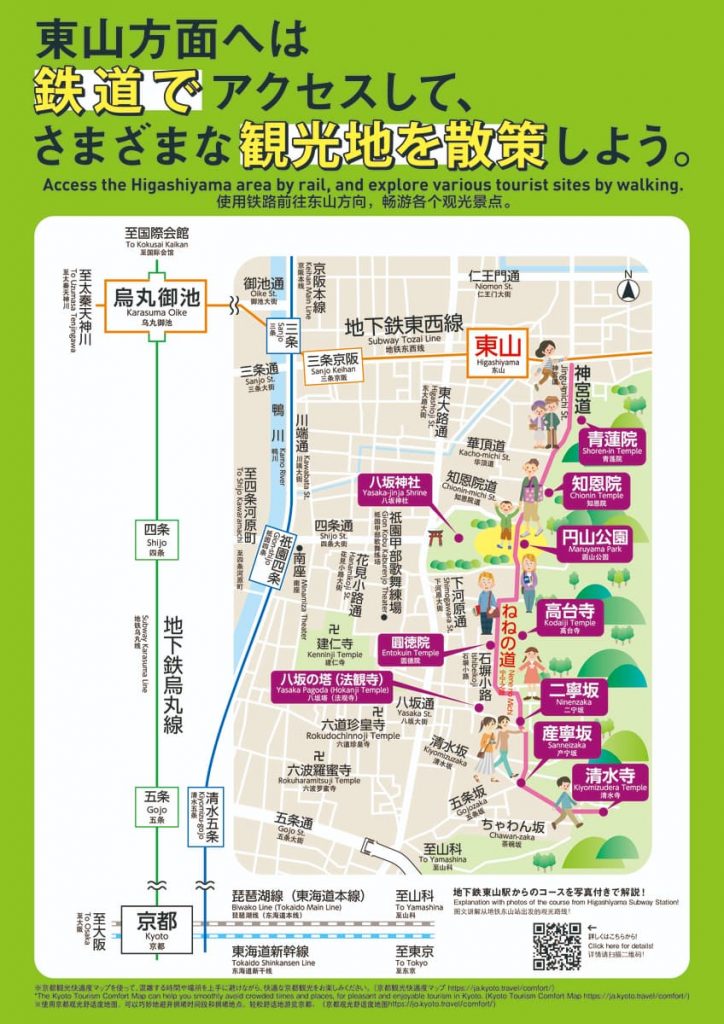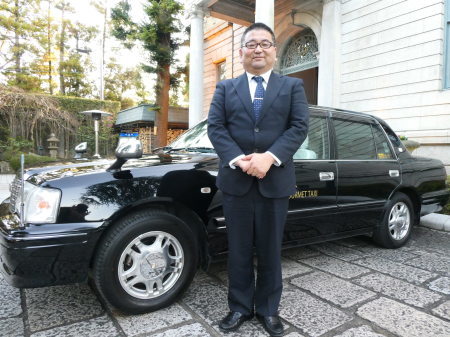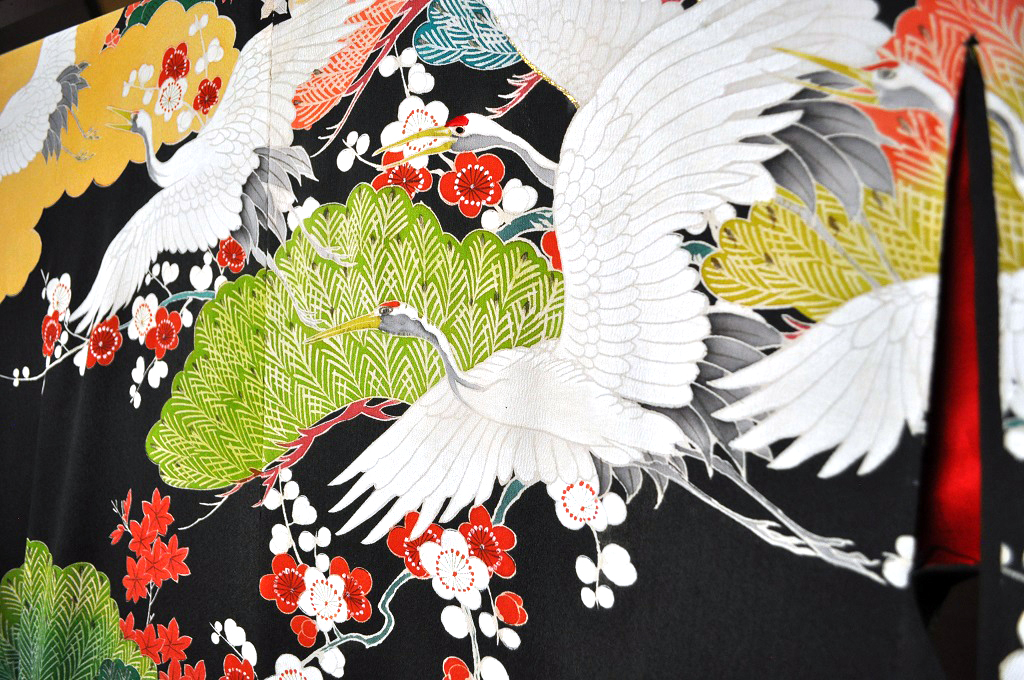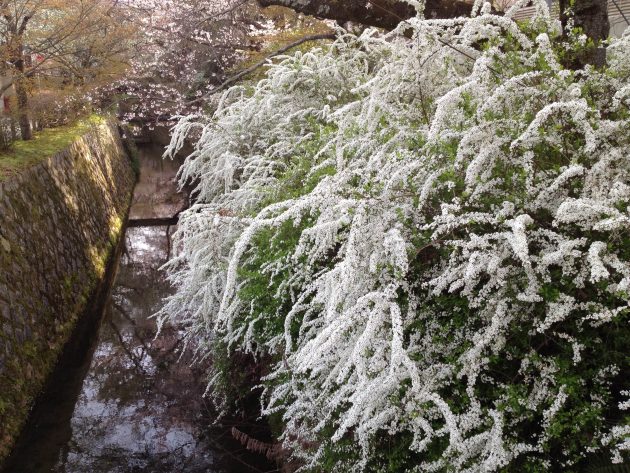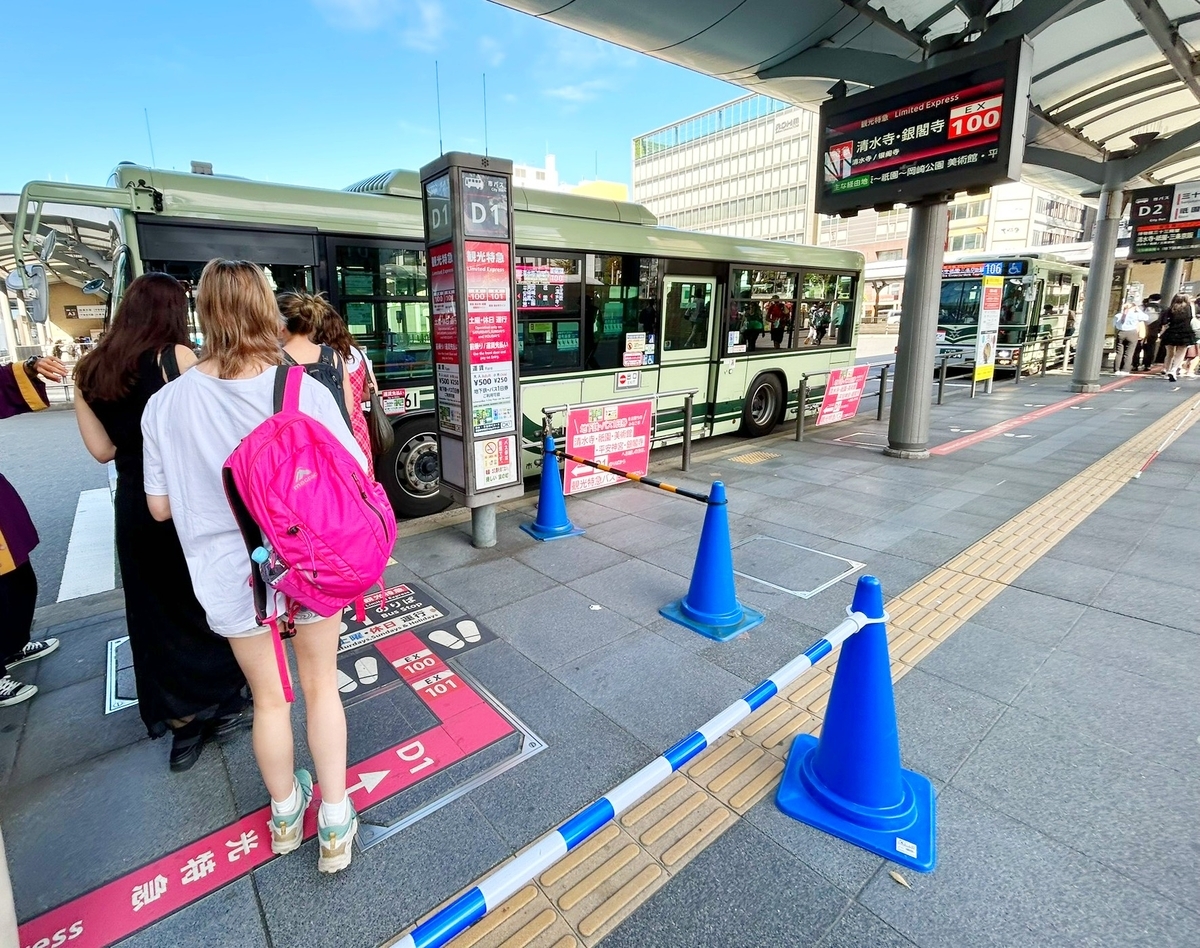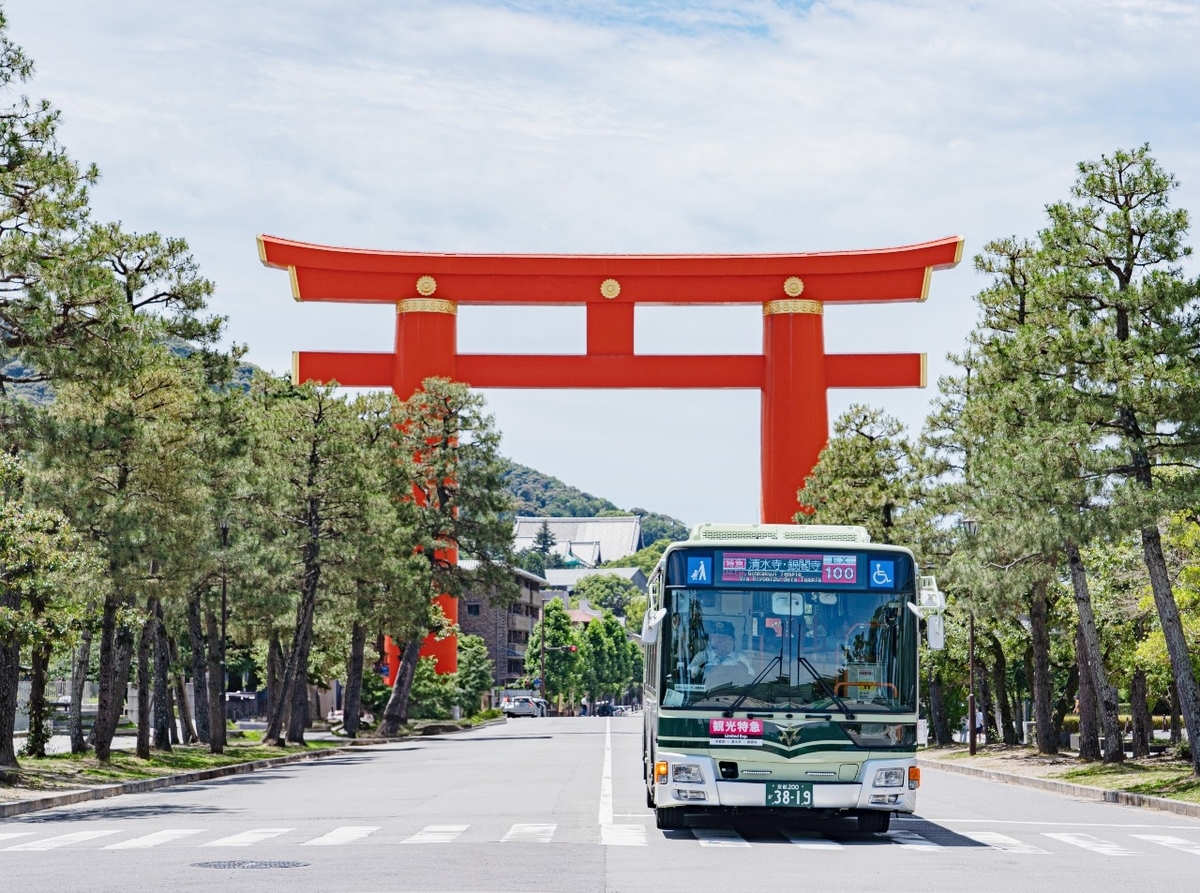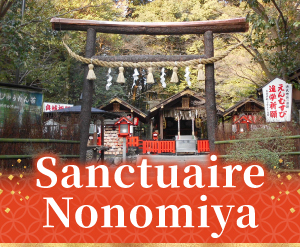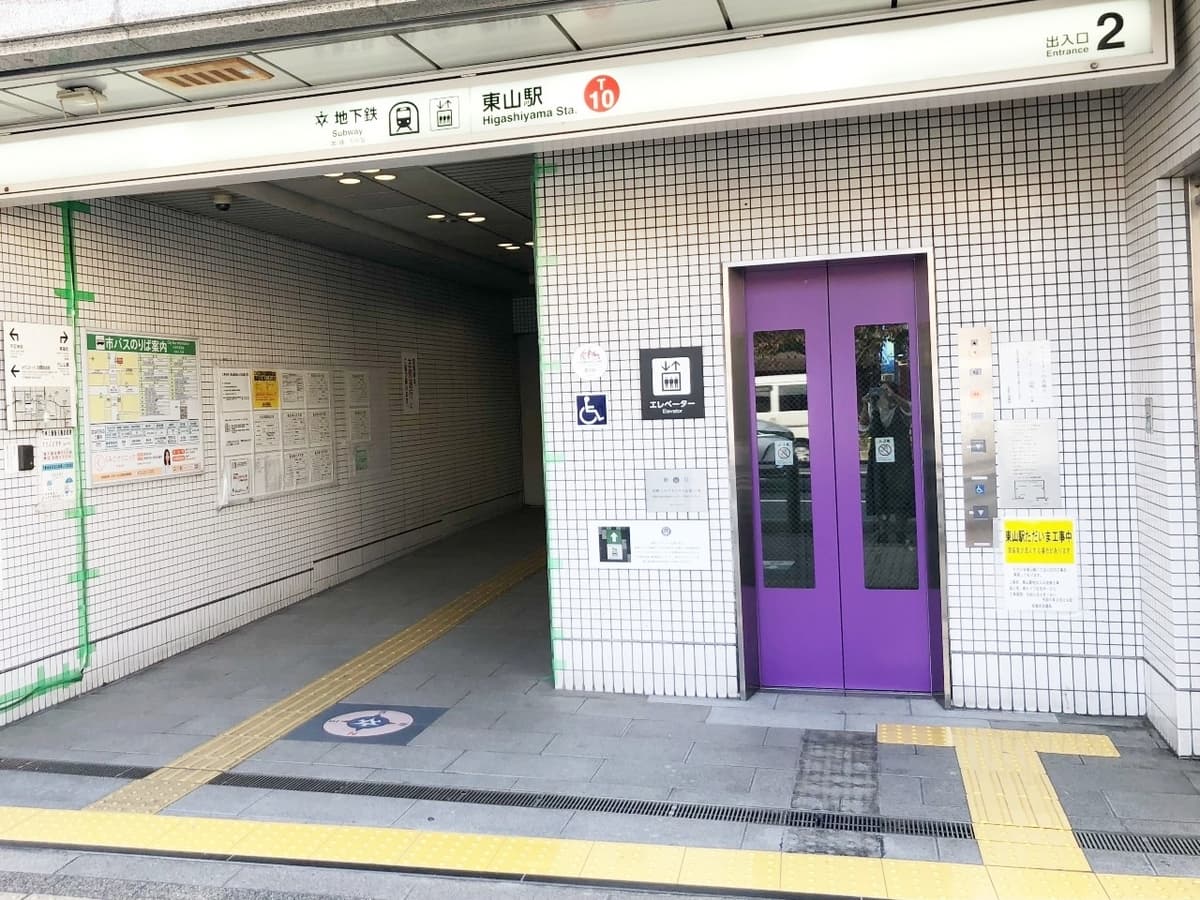
Le quartier de Higashiyama, l'une des destinations touristiques les plus populaires de Kyoto, abrite de nombreuses attractions. Des sites célèbres tels que le temple Kiyomizu, le temple Kodaiji et le temple Chion-in sont tous accessibles à pied. Une visite dans ce quartier est également l'occasion d'une agréable promenade.
Itinéraire de marche recommandé depuis la gare de Higashiyama
Lors de votre visite au temple Kiyomizu, l'itinéraire recommandé est celui qui commence à la gare de Higashiyama et vous emmène à différents endroits le long du chemin.
La marche sur l'ensemble du parcours prend environ 40 à 45 minutes.
Temps de marche approximatifs
Gare de Higashiyama → (10 min.) → Temple Shoren-in → (5 min.) → Temple Chion-in → (2 min.) → Parc Maruyama → (5 min.) → Temple Kodaiji et temple Entoku-in → (5 min.) → Ninenzaka → (5 min.) → Sannenzaka → (10 min.) → Temple Kiyomizu
Cliquez ici ou sur l'image pour l'agrandir
Accès facile aux temples Kiyomizu-dera et Kinkaku-ji (guide vidéo)
1. Prenez le métro de la gare de Kyoto à la gare de Higashiyama
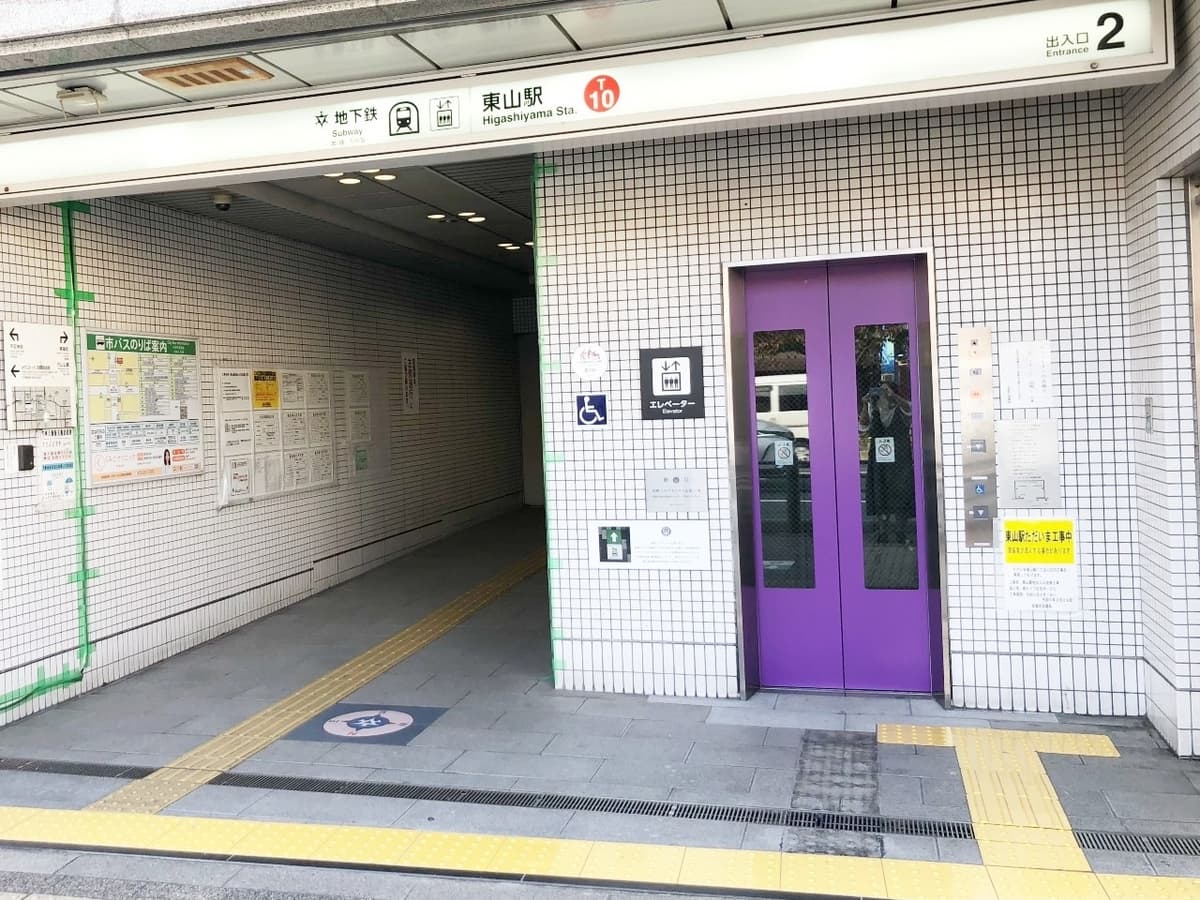
Depuis la gare de Kyoto, prenez la ligne de métro Karasuma en direction de Kokusaikaikan. Descendez au troisième arrêt, Karasuma Oike, puis changez pour la ligne de métro Tozai en direction de Rokujizo ou de Biwako-hamaotsu. Descendez au troisième arrêt, la station Higashiyama.
Le trajet dure environ 15 minutes et le tarif adulte est de 260 yens. À la gare de Higashiyama, prenez la sortie 2 jusqu'au niveau de la rue.
La rue commerçante Furukawacho, située juste à la sortie 2, est également un lieu de passage idéal. Elle est réputée pour son atmosphère rétro rappelant l'ère Showa (1926-1989) au Japon.
2. Marchez le long de Jingu-michi jusqu'au temple Shoren-in et au temple Chion-in
La première étape de cette promenade vous mènera sur une route nommée Jingu-michi. Depuis la gare de Higashiyama, dirigez-vous vers l'est, puis tournez à droite (sud) à l'intersection de Sanjojingumichi.
En allant dans la direction opposée (nord), vous arriverez au sanctuaire Heian Jingu et au musée d'art Kyocera de la ville de Kyoto.

Après avoir longé Jingu-michi, vous apercevrez le temple Shoren-in sur votre gauche. Ses grands camphriers offrent un spectacle magnifique. Ce temple abrite le Tableau du Cetaka bleu, un trésor national, ainsi qu'un jardin conçu par le célèbre paysagiste Soami.
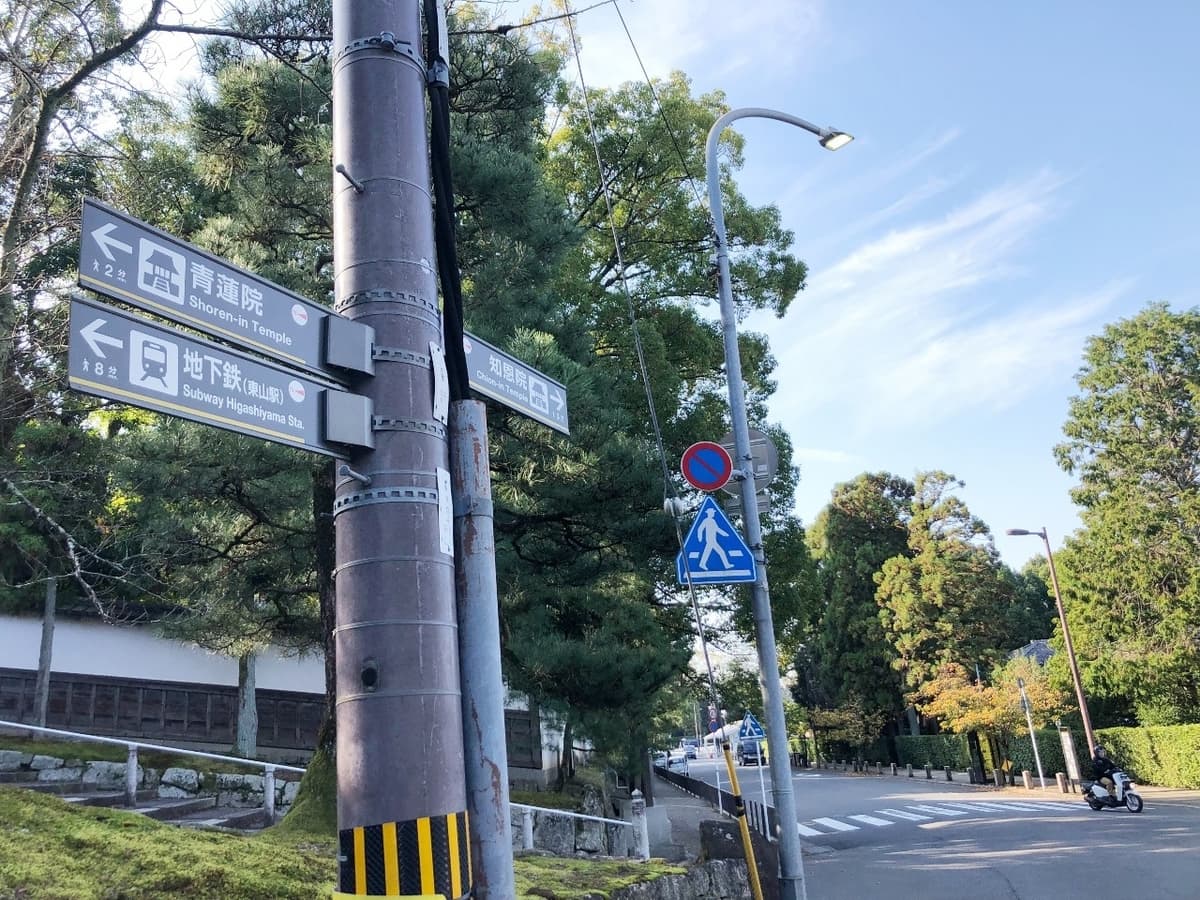
Panneau du temple de Chion-in

Temple de Chion-in
Continuez votre route et vous arriverez au panneau d'information du temple Chion-in. Continuez tout droit pendant environ 5 minutes et vous verrez la grande porte Sanmon sur votre gauche. Chion-in est le temple principal de la branche bouddhiste Jodo (Terre Pure) et est également célèbre pour ses liens historiques avec le seigneur féodal Tokugawa Ieyasu.
La route devant le temple Chion-in est assez large et vous y trouverez des boutiques de souvenirs ainsi que l'hôtel Chion-in Wajun-Kaikan.
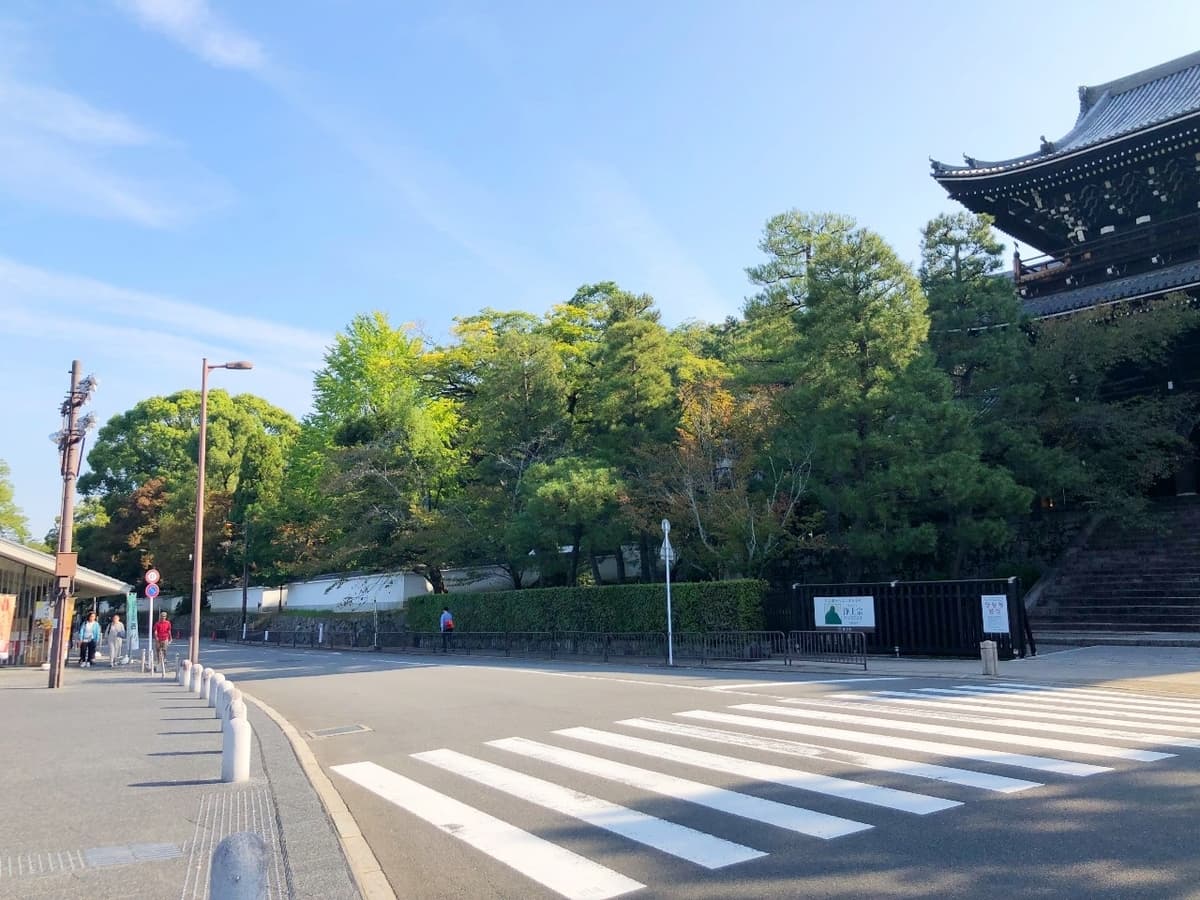
Après avoir dépassé le temple Chion-in, vous trouverez juste à côté le parc Maruyama. Entrez dans le parc par la porte sud.
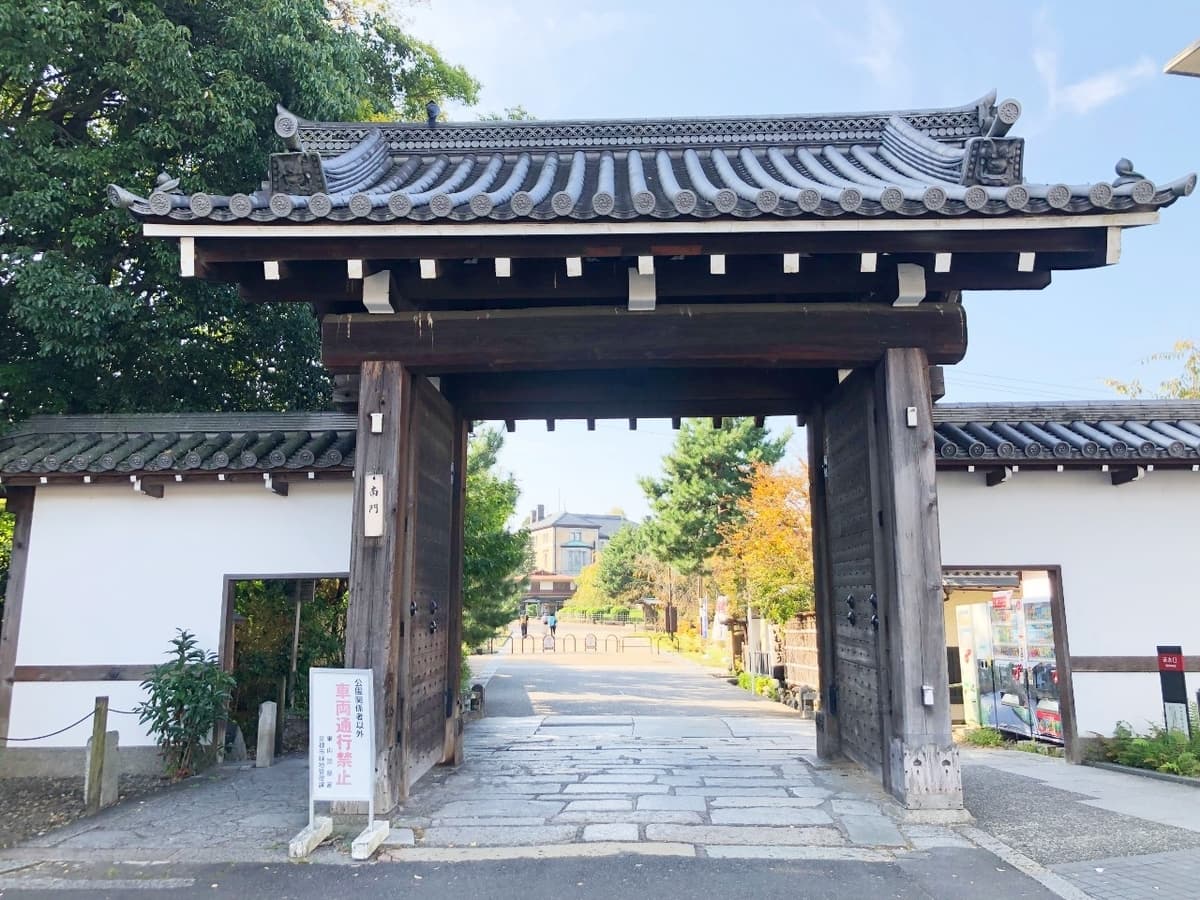
La porte sud du temple Chion-in, qui mène au parc Maruyama
Le parc Maruyama est un jardin aux vastes espaces et aux paysages magnifiques. Les cerisiers pleureurs sont très appréciés au printemps.
En entrant dans le parc Maruyama, dirigez-vous vers la droite (ouest) et vous verrez le sanctuaire Yasaka
3. Promenez-vous le long de Nene-no-Michi jusqu'au temple Kodaiji et au temple Entoku-in
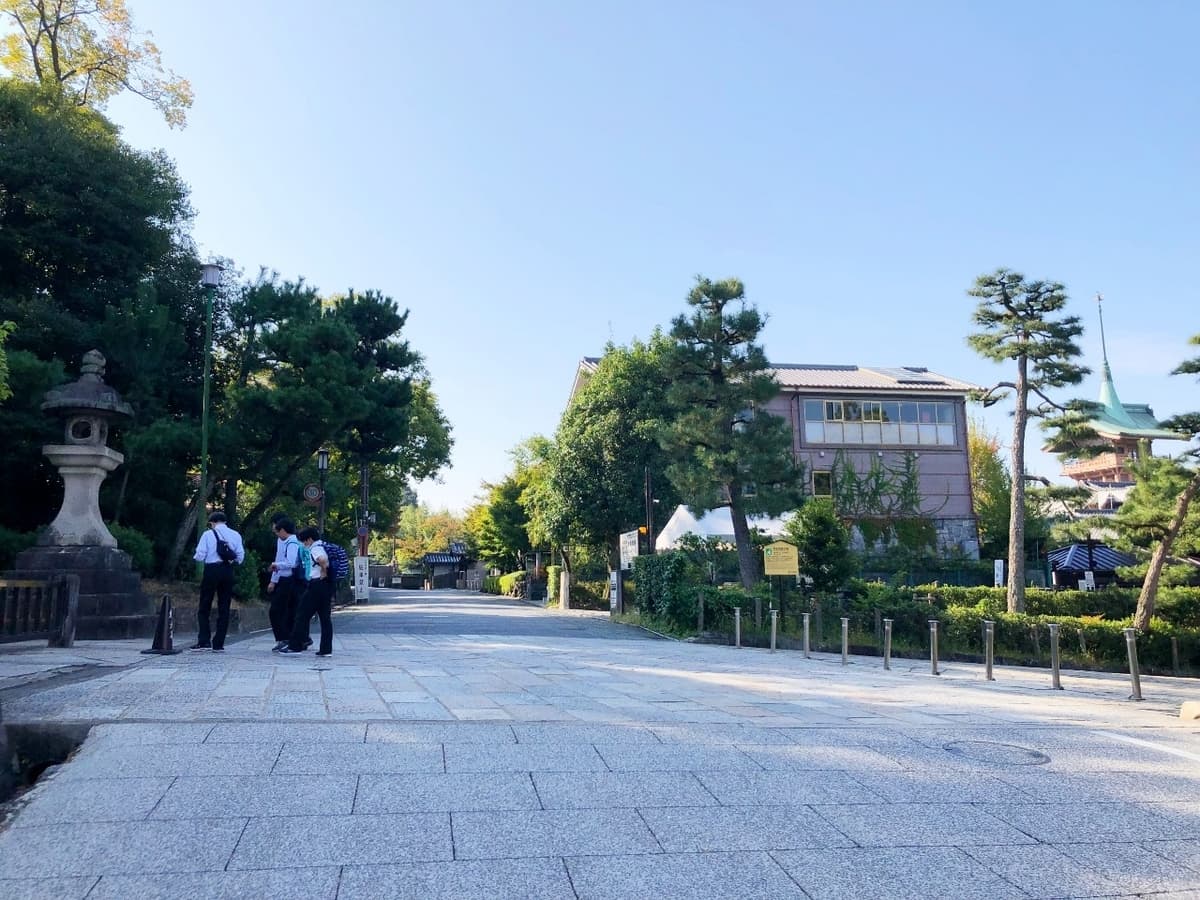
Après avoir traversé le parc Maruyama, vous arriverez à Nene-no-Michi. Continuez tout droit sur cette route magnifiquement pavée. Après environ 5 minutes de marche, vous trouverez un panneau au bout de la route. Tournez à droite (ouest) pour arriver au temple Kodaiji. Une grande statue de Jizo se trouve sur le côté droit, ce qui le rend facilement reconnaissable.
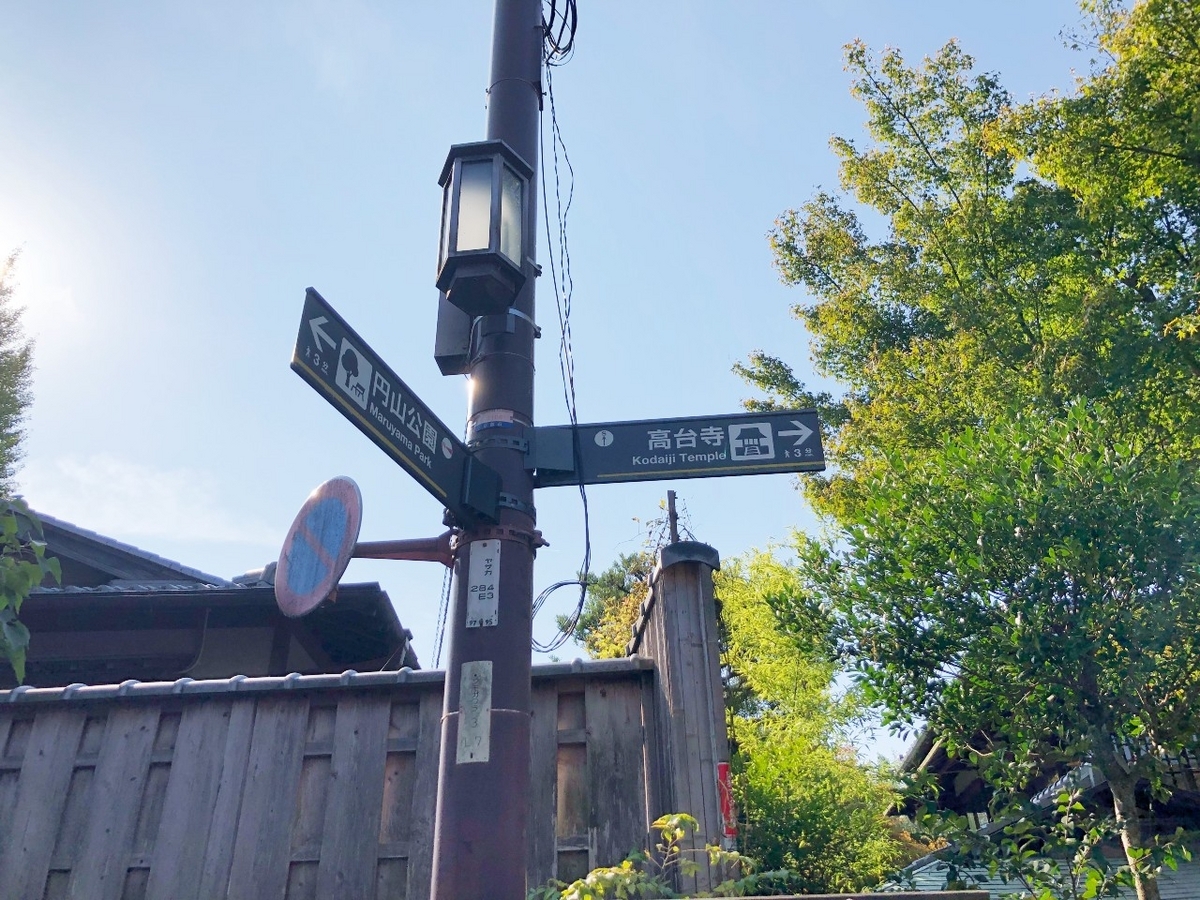
Panneau du temple Kodaiji

La statue emblématique de Jizo
Tournez à droite et vous arriverez sur une belle route pleine de caractère.
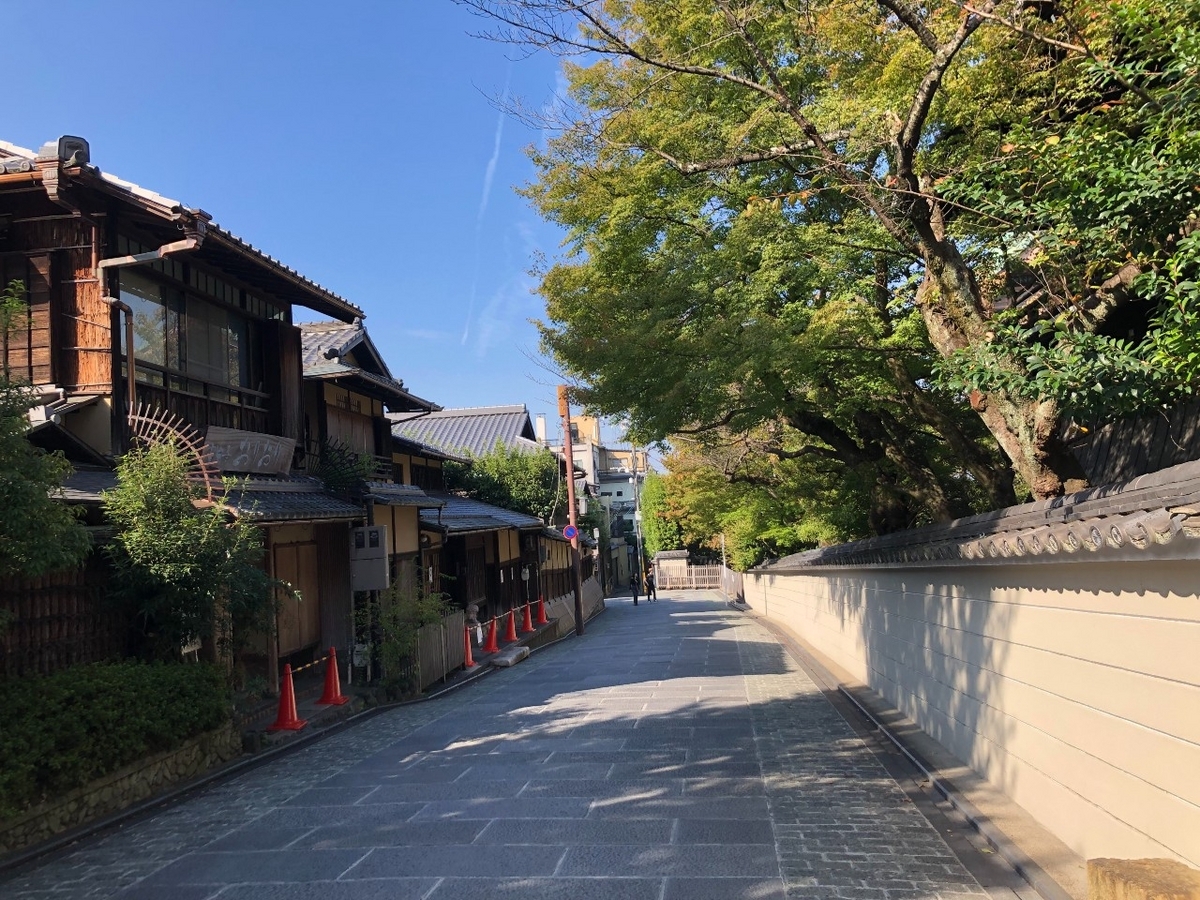
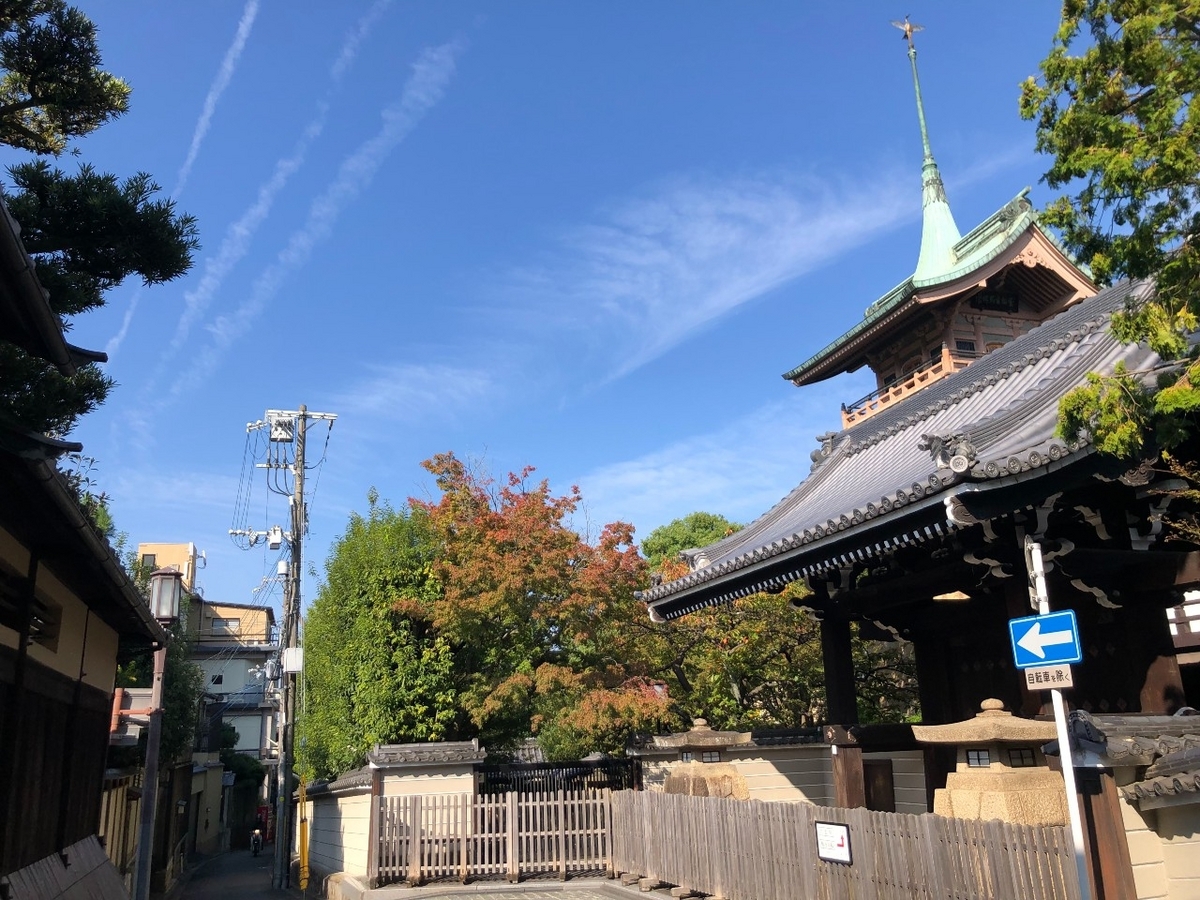
Sur la droite, vous pouvez voir Gionkaku, inspiré des chars de la procession du festival de Gion au temple Daiun-in. Continuez tout droit, puis tournez à droite (sud).
Nene-no-Michi est une rue pavée à l'atmosphère typiquement kyotoïte. Elle doit son nom à Nene, également connue sous le nom de Kitanomandokoro, épouse du seigneur féodal Toyotomi Hideyoshi, qui y passa les dernières années de sa vie.

C'est une belle route qui incarne la profondeur historique de Kyoto.
www.youtube.com
Vous pouvez suivre l'animation de Nene-no-Michi grâce à la caméra en direct. En cas de forte affluence, vous pouvez emprunter Shimogawa-dori, une rue plus à l'est, comme itinéraire alternatif.
Veuillez également consulter la carte pour voir le niveau de confort touristique de Nene-no-Michi à Kiyomizuzaka :
Kyoto Travel Congestion Forecast

Marches menant au temple Kodaiji
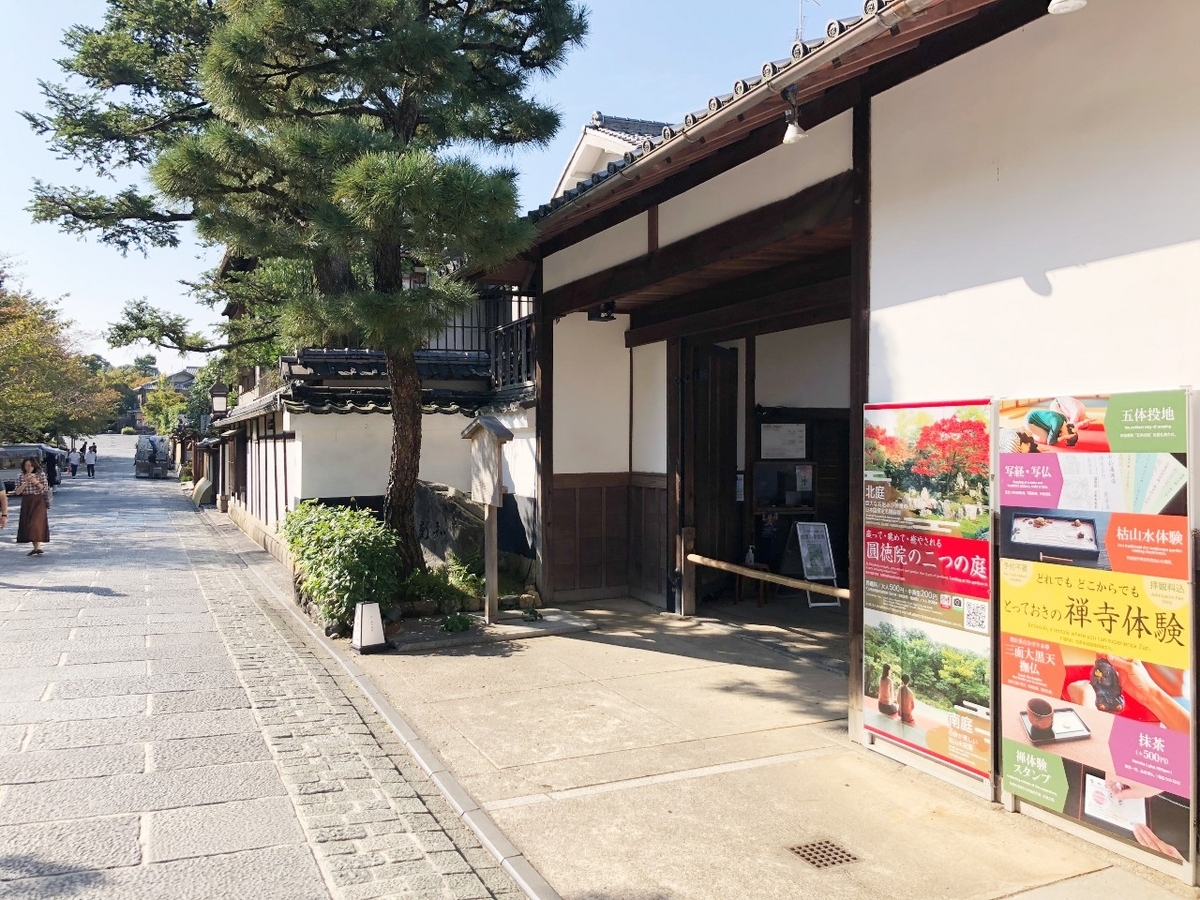
Temple Entoku-in
En poursuivant vers le sud sur Nene-no-Michi, vous apercevrez bientôt le temple Kodaiji sur votre gauche (est). Ce temple a été construit par Kitanomandokoro (Nene) pour pleurer la perte de son mari, Toyotomi Hideyoshi, et est également célèbre pour ses laques Kodaiji Makie.
Le temple Entoku-in, à droite (ouest), est un temple pagode du temple Kodaiji, et on dit que c'est là que Kitanomandoroko a vécu les dernières années de sa vie.
4. Emmenez Ninenzaka et Sannenzaka au temple Kiyomizu
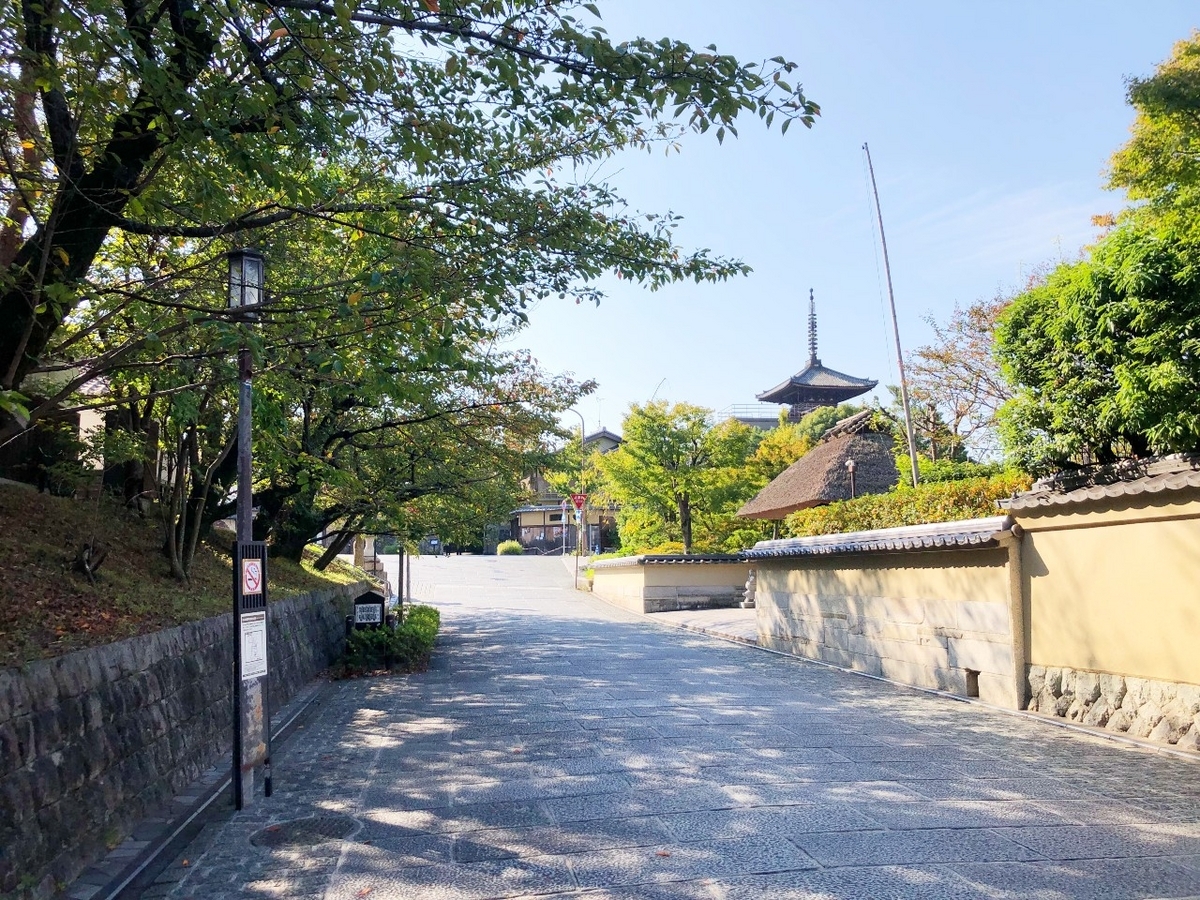
Lorsque vous apercevrez la pagode Yasaka sur votre droite (ouest), tournez à gauche. Vous vous dirigerez ensuite vers Ninenzaka.
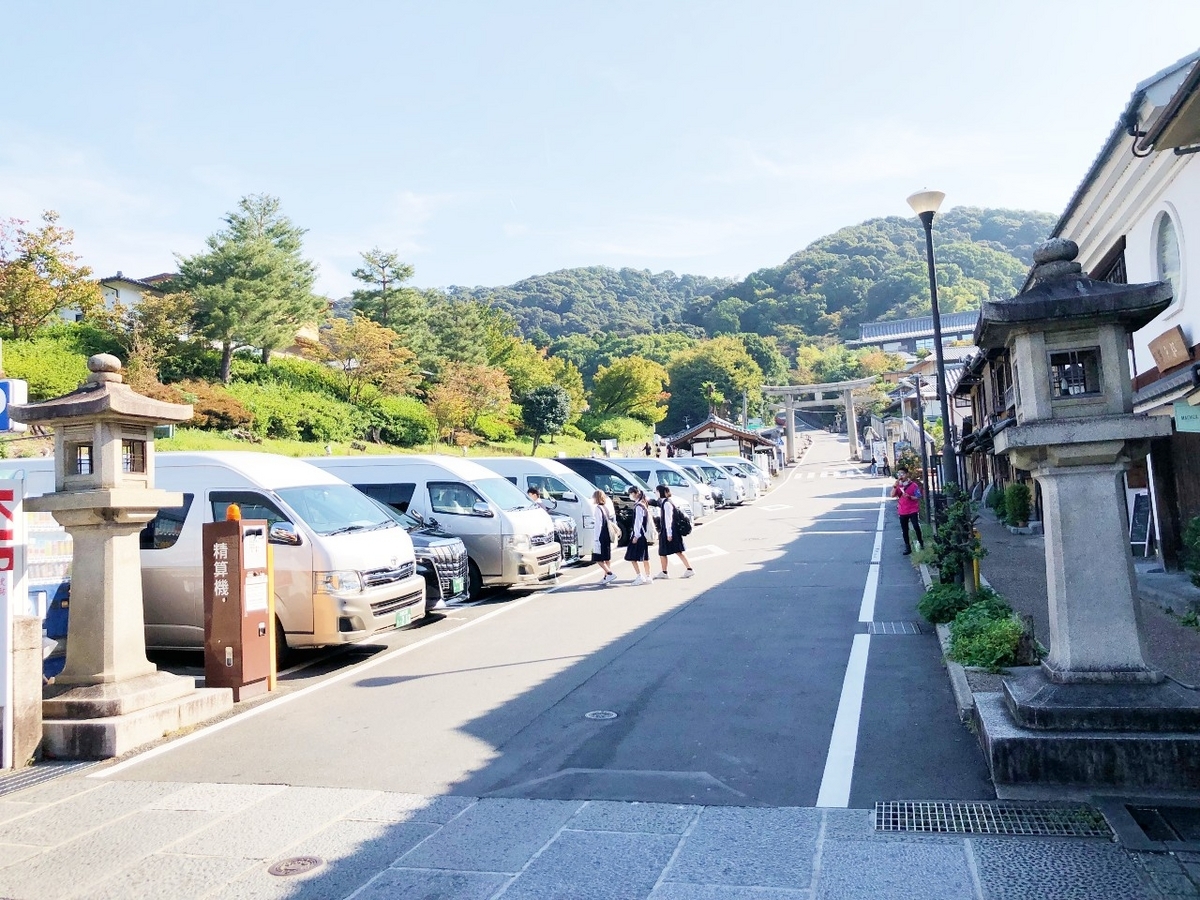
Ishin-no-Michi
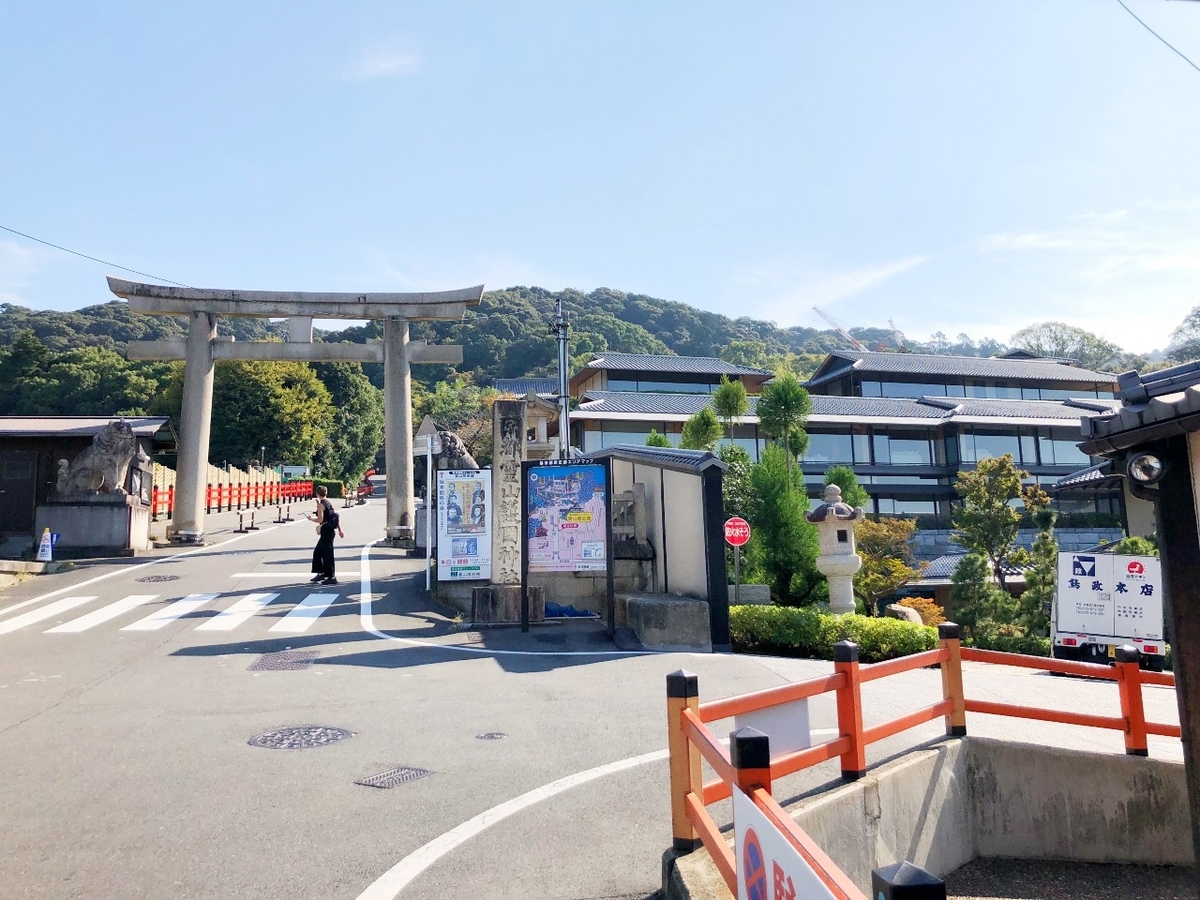
Porte Torii du sanctuaire Ryozen Gokoku de Kyoto
Tournez à gauche (est) et vous trouverez une route (Ishin-no-Michi) au bout de laquelle se trouve un torii. Continuez tout droit. Arrivé au torii, tournez à droite (sud) pour entrer dans Ninenzaka.
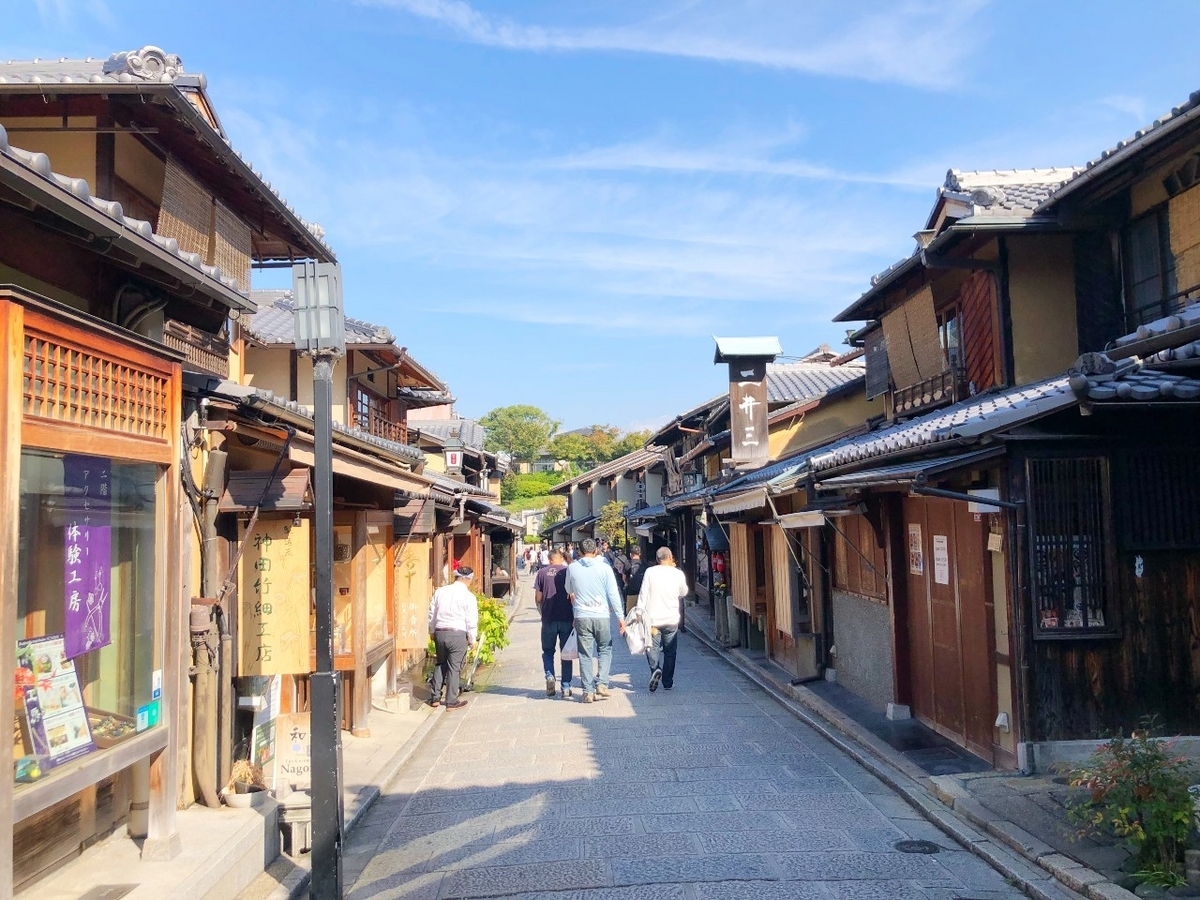
Ninenzaka
Cette rue est bordée de bâtiments à l'allure typiquement japonaise. On y trouve également de nombreuses boutiques de souvenirs et restaurants où il fait bon s'arrêter. Après environ 5 minutes de marche, montez les marches et tournez à gauche pour atteindre Sannenzaka.
Si vous allez dans la direction opposée, vous arriverez au site pittoresque connu sous le nom de pagode Yasaka.
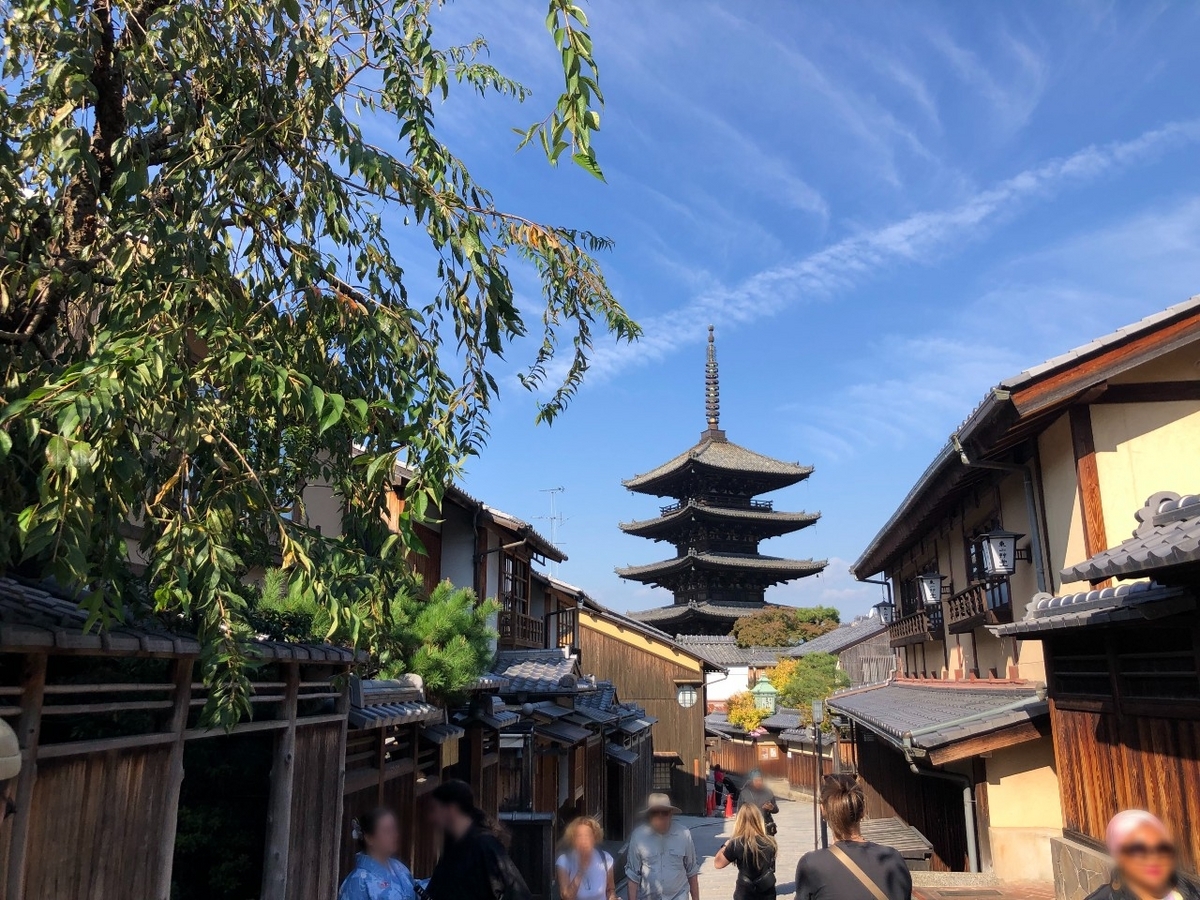
Pagode Yasaka
Continuez sur Sannenzaka et montez la colline pendant environ 10 minutes, jusqu'à un nouvel escalier. Tournez à gauche (est) et continuez tout droit sur Kiyomizuzaka pendant environ 5 minutes, jusqu'au temple Kiyomizu. De nombreuses boutiques de souvenirs se trouvent de chaque côté de la route ; après votre visite du temple, n'hésitez pas à y jeter un œil en redescendant la colline.
Laissez Hands-Free Travel prendre soin de vos bagages à la gare de Kyoto et à d'autres endroits
À Kyoto, il existe de nombreux endroits où vous pouvez faire transporter vos bagages de la gare à votre hébergement ou où vous pouvez stocker temporairement vos bagages.
1. Transport
Ce service organise le transport de vos bagages de la gare à votre hébergement, de votre hébergement à la gare, ou d'un hébergement à un autre. Si vous effectuez les démarches dans un délai précis, vous pouvez même les recevoir le jour même.
2.Remettre au comptoir
Ce service vous permet d'enregistrer au comptoir les bagages trop volumineux pour rentrer dans un casier.
3.Mettre dans un casier
Il s’agit d’une option pratique disponible à tout moment où la station est ouverte.
Trouvez et utilisez le service qui répond le mieux à vos besoins.
Outre la gare de Kyoto, de nombreuses autres installations vous permettent de laisser vos bagages. Se débarrasser de ces bagages encombrants peut faciliter vos visites et vous permettre de voyager en toute sérénité. Déchargez-vous de ce poids et profitez d'un voyage mains libres.
Site officiel de HANDS FREE KYOTO
Il existe un certain nombre de temples, sanctuaires et autres sites touristiques célèbres entre la gare de Higashiyama et le temple Kiyomizu.
Les bus peuvent être bondés pendant la saison touristique. Marcher depuis la station de métro Higashiyama est donc un moyen beaucoup plus confortable de profiter de votre visite. C'est aussi un excellent moyen d'admirer les magnifiques paysages urbains de Kyoto.
Autres inspirations de voyage


